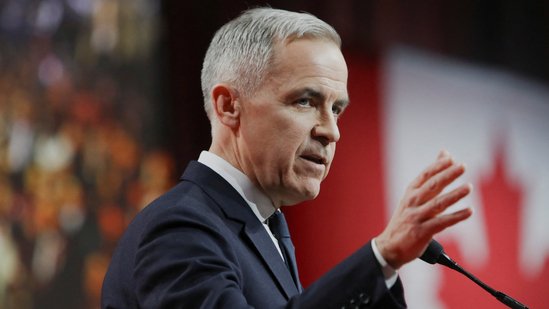Introduction to Chase Bank’s Announcement
Chase Bank, one of the largest financial institutions in the United States, recently made headlines with its announcement regarding the potential discontinuation of its free checking services. This development has stirred considerable interest and concern among consumers, financial analysts, and the broader public. The prospect of a major bank withdrawing free checking options has raised questions about the future of accessible banking and the potential implications for customers who rely on these services to manage their finances without incurring additional costs.
The announcement has sparked a wave of initial reactions, ranging from frustration and disappointment to curiosity about the underlying reasons for this potential shift. Many consumers view free checking as a staple of modern banking, providing a cost-effective way to handle everyday transactions. Financial analysts, on the other hand, are keen to understand the strategic motivations behind Chase Bank’s decision, speculating on the broader trends in the banking industry that may have influenced this move.
Current Landscape of Free Checking Accounts
In today’s banking environment, free checking accounts have become a staple offering for many financial institutions. These accounts, which allow customers to manage their money without incurring monthly maintenance fees, are highly sought after by consumers. Numerous banks, ranging from large national institutions to smaller regional and community banks, provide free checking services as part of their product lineup. This widespread availability underscores the competitive nature of the banking industry, where customer retention and acquisition are paramount.
However, the term “free checking” often comes with certain contingencies. While some banks genuinely offer no-strings-attached free checking accounts, many impose specific requirements that customers must meet to avoid fees. Common criteria include maintaining a minimum daily or monthly balance, setting up direct deposits, or conducting a certain number of transactions each month. For instance, a bank might waive the monthly fee if the account holder maintains a balance of at least $1,500 or has at least one direct deposit of $500 or more each month.
These conditional requirements are designed to encourage customers to engage more actively with their bank and utilize additional services. Banks benefit from these stipulations by ensuring a steady flow of deposits, which can be used for lending and other financial activities. Customers, on the other hand, gain from the convenience and cost savings associated with meeting the necessary conditions to sustain a free checking account.
Why Chase is Considering Ending Free Checking
Chase Bank is currently contemplating the discontinuation of its free checking accounts, a move that has sparked significant concern among its customers. The primary reasons behind this potential shift are rooted in a combination of financial pressures, regulatory changes, and evolving business strategies. Each of these factors contributes to the bank’s decision-making process, reflecting broader trends within the banking industry.
One of the most pressing financial pressures is the current low-interest-rate environment, which has narrowed profit margins for banks. With interest rates at historic lows, banks earn less from the loans they issue compared to previous years. This reduction in revenue has prompted financial institutions, including Chase, to reassess their service offerings and fee structures to maintain profitability. By potentially ending free checking, Chase aims to offset these diminished earnings through additional service fees.
Regulatory changes also play a significant role in this consideration. Post-2008 financial crisis regulations, such as the Dodd-Frank Act, have imposed stringent requirements on banks, limiting the fees they can charge for certain services. These regulations, while designed to protect consumers, have also reduced banks’ ability to generate income from traditional sources. Consequently, banks are exploring alternative revenue streams, including the reintroduction of fees for previously free services like checking accounts.
Furthermore, Chase’s evolving business strategies reflect a broader industry trend towards digital banking and personalized financial services. The shift towards online and mobile banking reduces the operational costs associated with physical branches but also necessitates investment in technology and cybersecurity. By phasing out free checking, Chase can reallocate resources to enhance its digital infrastructure and offer more tailored financial products that meet the changing needs of its customers.
Potential Ripple Effect Across the Banking Industry
The decision by Chase Bank to potentially end free checking accounts could have significant ramifications across the wider banking industry. As one of the largest financial institutions in the United States, Chase’s strategic moves often set a precedent that other banks may follow. If Chase proceeds with this change, it is plausible that other major banks might consider similar actions to maintain competitive parity and profitability.
Financial institutions operate in a highly competitive environment, and the elimination of free checking accounts by a market leader could prompt a reevaluation of fee structures industry-wide. Smaller banks and credit unions, which often rely on free checking to attract customers, might see this as an opportunity to differentiate themselves by continuing to offer these services without fees. However, they could also face increased pressure to introduce fees to sustain their operations, particularly if the larger banks’ strategies prove financially advantageous.
The impact on consumer behavior is another crucial aspect to consider. Customers who have grown accustomed to free checking services might begin to shop around for alternatives, potentially gravitating towards institutions that maintain no-fee policies. This shift could enhance competition among banks, pushing them to innovate and offer more value-added services to retain and attract customers. On the other hand, some consumers might accept the new fees if they perceive the overall value proposition of their current bank to be superior, including considerations like convenience, customer service, and additional banking products.
Impact on Chase Bank Customers
The discontinuation of free checking services at Chase Bank is poised to have a significant impact on its existing customers. For many, free checking accounts have been an essential financial tool, offering a convenient way to manage day-to-day finances without incurring additional costs. With the potential end of this service, customers may need to reassess their banking strategies to avoid new fees.
One likely scenario is that Chase Bank will introduce new account types with varying fee structures and benefits. These new accounts could include premium checking options that offer enhanced features such as higher interest rates, lower fees for other services, or additional perks like identity theft protection or travel rewards. While these accounts may come with monthly maintenance fees, customers could potentially waive these fees by meeting specific requirements, such as maintaining a minimum balance or setting up direct deposits.
For those who prefer to stick with basic checking options, Chase Bank might implement alternative fee structures. For example, customers could avoid fees by using online banking services, opting for paperless statements, or conducting a certain number of transactions per month. Additionally, Chase may offer accounts tailored to specific customer segments, such as students or seniors, which could come with reduced or waived fees.
Customers concerned about the potential fees should actively explore these new options and assess which account type best suits their financial needs. By understanding the requirements to avoid fees and taking advantage of available benefits, customers can continue to manage their finances effectively without incurring unnecessary costs. Moreover, customers can reach out to Chase Bank representatives to seek personalized advice and ensure they are making the most of the available banking products.
Alternatives to Free Checking Accounts
As Chase Bank contemplates ending their free checking accounts, it’s imperative for consumers to explore alternative solutions to manage their finances effectively. Fortunately, a variety of financial institutions still offer free checking accounts, each with distinct criteria for eligibility. Understanding these options can help affected customers make informed decisions.
First, numerous regional and community banks maintain free checking account options. These institutions often require lower minimum balances or direct deposits to waive monthly maintenance fees. For example, banks like Ally Bank and Capital One offer free checking accounts with no monthly fees, provided certain criteria are met, such as maintaining a minimum balance or setting up direct deposits.
Online banks have emerged as robust alternatives to traditional banks, frequently offering free checking accounts with competitive features. Due to their reduced overhead costs, online banks like Discover Bank and Simple can provide fee-free checking accounts with benefits like higher interest rates on balances and fewer transaction fees. Additionally, these banks often provide user-friendly mobile apps and extensive customer support, enhancing the banking experience.
Credit unions represent another viable option. Unlike traditional banks, credit unions are member-owned and typically offer lower fees and higher interest rates on accounts. Institutions such as Alliant Credit Union and Navy Federal Credit Union provide free checking accounts to their members, often with fewer requirements than those imposed by larger banks. Membership criteria for credit unions can vary but generally include factors such as geographic location, employment, or association with specific organizations.
Why This Change Might Not Be as Bad as It Sounds
The announcement of the end of free checking by a major bank like Chase has undoubtedly raised concerns among consumers, many of whom rely on such accounts to manage their day-to-day financial activities. However, this shift might not be as detrimental as it initially appears. Instead, it could present an opportunity for consumers to adopt better financial habits and explore more advantageous banking options.
Firstly, the termination of free checking accounts could serve as a wake-up call, prompting individuals to reassess their current banking relationships. Many people remain with their banks out of convenience or habit, often overlooking the benefits offered by other financial institutions. This change could encourage consumers to research and compare different banks, leading them to discover accounts that offer lower fees, higher interest rates, or additional perks such as cash-back rewards and improved customer service.
Moreover, the potential imposition of fees on checking accounts can motivate consumers to maintain better financial practices. For instance, customers might become more diligent about monitoring their account balances and avoiding overdrafts, which often incur hefty charges. Additionally, the awareness of fees can encourage individuals to maintain a minimum balance in their accounts, thereby fostering a habit of saving and financial discipline.
Another positive aspect to consider is the growing trend of digital banking. Online-only banks and credit unions often offer fee-free checking accounts and competitive interest rates on savings accounts. These institutions typically have lower overhead costs compared to traditional banks and can pass those savings onto their customers. The shift away from free checking at Chase might drive more consumers toward these digital alternatives, ultimately leading to a more diversified and competitive banking landscape.
Conclusion: Navigating the Changing Banking Landscape
The potential shift by a major bank towards ending free checking has understandably sparked concern among consumers. Throughout this blog post, we’ve delved into the underlying reasons for this possible change, including increased regulatory costs, the evolving digital banking environment, and the need for banks to maintain profitability in a competitive market. These factors illustrate the broader trends affecting the banking industry as a whole.
As these changes unfold, it is crucial for consumers to stay informed about how new policies could impact their financial situation. By understanding the dynamics at play, individuals can take proactive steps to manage their finances effectively. This includes regularly reviewing account statements, being aware of any new fees or charges, and exploring alternative banking options if necessary.
Ultimately, while the prospect of losing free checking is concerning, it also presents an opportunity for consumers to reassess their banking relationships and make choices that better align with their financial goals. By staying vigilant and informed, individuals can navigate these changes with confidence and continue to manage their finances effectively.
































